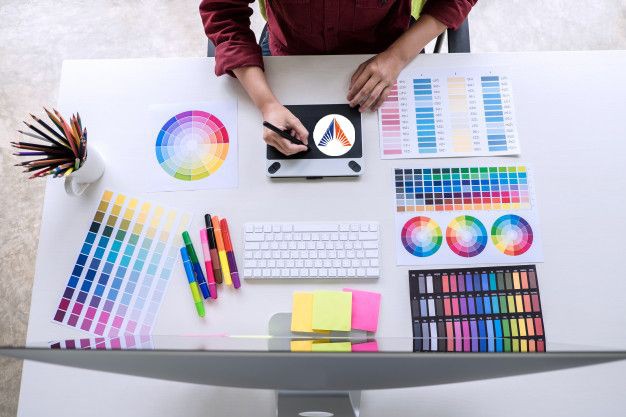In an increasingly digital world, the art of design remains crucial in both print and digital media. Understanding the best practices for each medium ensures that your message is communicated effectively, whether on paper or screen. Here are some powerful design insights to guide your work in both realms.
Understanding the Medium
The first step in creating impactful designs is understanding the unique characteristics of print and digital media. Print design often involves tangible materials like paper, ink, and finishes, which can affect color, texture, and overall aesthetics. Digital media, on the other hand, includes websites, apps, and social media, where interactivity and screen resolution play significant roles. Tailoring your design to the medium ensures clarity and engagement.
Emphasizing Typography
Typography is a cornerstone of effective design. In print, choose fonts that are legible and appropriate for the content and audience. Pay attention to kerning, leading, and tracking to ensure text is readable and visually pleasing. For digital media, prioritize web-safe fonts and consider the variability of screen sizes and resolutions. Responsive typography that adapts to different devices enhances readability and user experience.
Leveraging Color Theory
Color plays a vital role in both print and digital design. In print, colors can appear differently depending on the material and printing process used. It’s essential to use CMYK color mode for accurate printing and to consider the impact of finishes like gloss or matte. For digital media, use RGB color mode and be aware of how colors appear on various screens. Consistent color schemes across all media strengthen brand identity and visual appeal.
Prioritizing Visual Hierarchy
Effective design relies on a clear visual hierarchy that guides the viewer’s attention. In print, use size, contrast, and placement to highlight important elements like headlines, images, and calls to action. White space is crucial for readability and balance. In digital design, incorporate these principles with additional focus on interactivity. Use clickable elements, animations, and responsive layouts to direct users’ focus and enhance navigation.
Creating Engaging Visuals
High-quality visuals are essential in capturing and retaining attention. For print, ensure images are high-resolution and suitable for printing. Vector graphics are ideal for logos and illustrations to maintain clarity at any size. In digital media, optimize images for fast loading times without compromising quality. Interactive elements like sliders, videos, and animations can make digital content more engaging and dynamic.
Consistency in Branding
Consistency in branding across all media reinforces your message and builds trust with your audience. Use the same color palette, typography, and logo placement in both print and digital designs. Develop a style guide to ensure all materials align with your brand’s visual identity. This cohesive approach enhances recognition and professionalism.
User Experience in Digital Media
User experience (UX) is paramount in digital design. Create intuitive navigation, clear calls to action, and accessible content. Consider the user journey and design with empathy, ensuring your digital platform is easy to use and meets the needs of your audience. Regularly test your design on various devices and browsers to ensure compatibility and usability.
Print Design Essentials
In print design, consider the physical aspects of your product. Choose the right paper type and weight for durability and feel. Pay attention to the printing process, whether it’s offset, digital, or screen printing, and how it affects the final product. Finishing touches like embossing, foil stamping, and die-cutting can add a unique and premium feel to your print materials.
Adapting to Digital Trends
Digital media is constantly evolving, so staying updated with the latest trends is crucial. From mobile-first design to the integration of augmented reality, being aware of and incorporating current trends can enhance your digital presence. However, balance trend adoption with timeless design principles to ensure longevity and relevance.
Measuring Impact
Finally, measuring the impact of your designs is essential for continuous improvement. In print, feedback can come from direct responses and sales performance. For digital media, utilize analytics tools to track user engagement, click-through rates, and conversion metrics. Analyzing this data helps refine your designs and strategies for better results.
In conclusion, powerful design in both print and digital media requires an understanding of each medium’s unique characteristics and best practices. By emphasizing typography, leveraging color theory, prioritizing visual hierarchy, creating engaging visuals, maintaining branding consistency, enhancing user experience, and staying adaptable to trends, you can create designs that effectively communicate your message and resonate with your audience.

